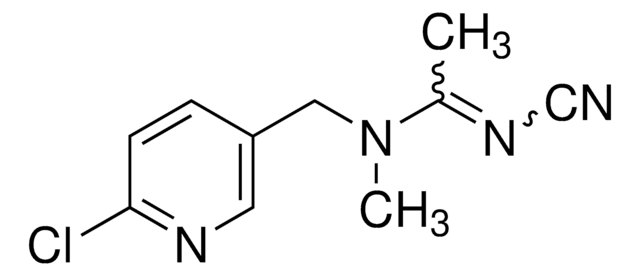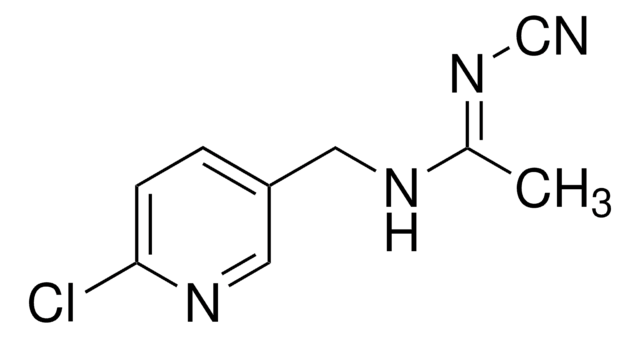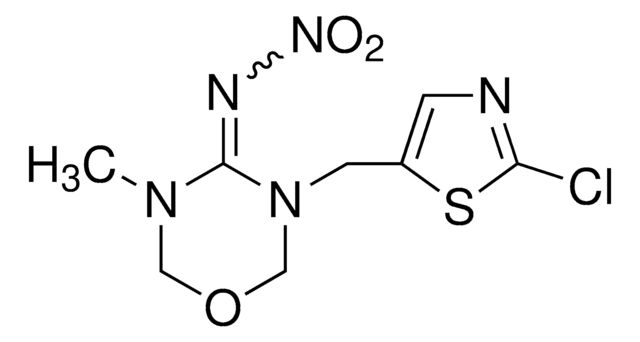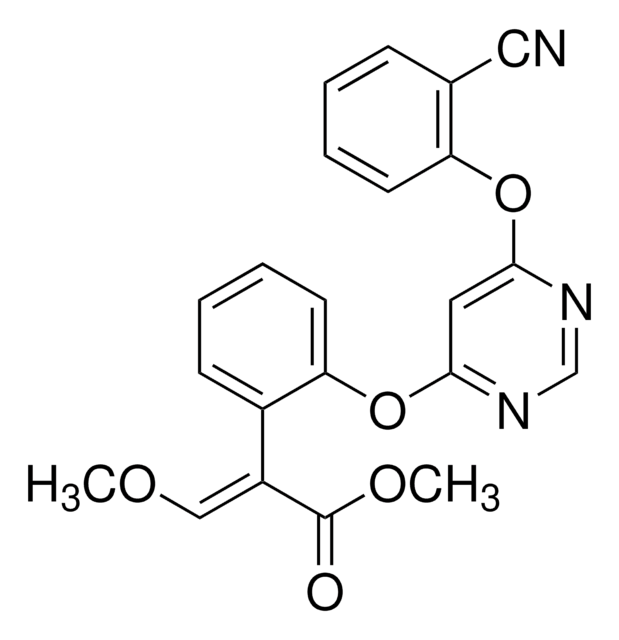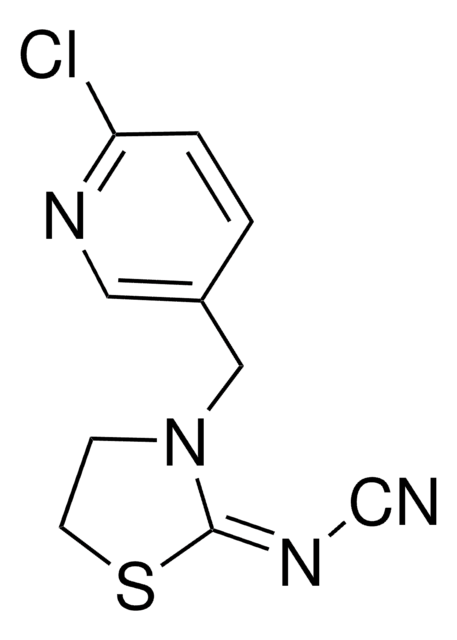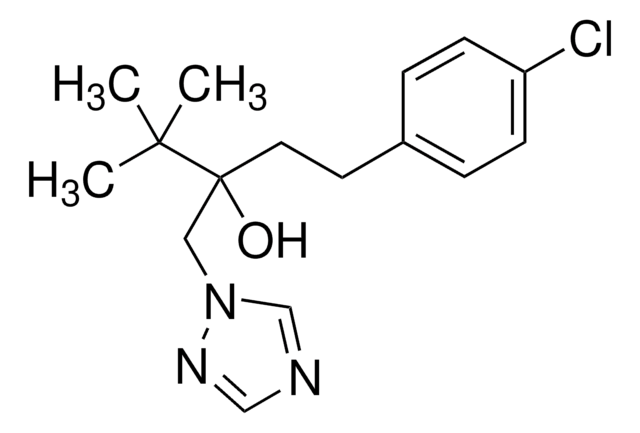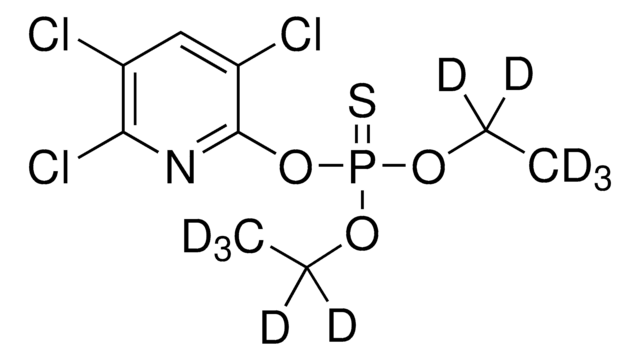39246
Acetamiprid-d3
PESTANAL®, analytical standard
Synonym(e):
(E)-N-(6-Chlor-3-pyridylmethyl)-N′-cyan-N-(methyl-d3)-acetamidin
About This Item
Empfohlene Produkte
Qualität
analytical standard
Qualitätsniveau
Isotopenreinheit
≥99.0 atom % D
Produktlinie
PESTANAL®
Assay
≥98.0% (HPLC)
Haltbarkeit
limited shelf life, expiry date on the label
Methode(n)
HPLC: suitable
gas chromatography (GC): suitable
Anwendung(en)
agriculture
Format
neat
Massenverschiebung
M+3
SMILES String
[2H]C([2H])([2H])N(Cc1ccc(Cl)nc1)\C(C)=N\C#N
InChI
1S/C10H11ClN4/c1-8(14-7-12)15(2)6-9-3-4-10(11)13-5-9/h3-5H,6H2,1-2H3/b14-8+/i2D3
InChIKey
WCXDHFDTOYPNIE-WZAFYLDHSA-N
Verwandte Kategorien
Allgemeine Beschreibung
see also 46451
Anwendung
Verpackung
Rechtliche Hinweise
Signalwort
Danger
H-Sätze
Gefahreneinstufungen
Acute Tox. 2 Inhalation - Acute Tox. 3 Oral - Eye Irrit. 2 - Skin Irrit. 2 - STOT SE 3
Zielorgane
Respiratory system
Lagerklassenschlüssel
6.1A - Combustible acute toxic Cat. 1 and 2 / very toxic hazardous materials
WGK
WGK 3
Flammpunkt (°F)
Not applicable
Flammpunkt (°C)
Not applicable
Choose from one of the most recent versions:
Besitzen Sie dieses Produkt bereits?
In der Dokumentenbibliothek finden Sie die Dokumentation zu den Produkten, die Sie kürzlich erworben haben.
Kunden haben sich ebenfalls angesehen
Protokolle
Learn more about Neonicotinoids - active substances used in plant protection products to control harmful insects.
On Friday, April 27, 2018, the European Union decided to ban the use of three neonicotinoid insecticides from use on field crops, having deemed them dangerous to bees. This application demonstrates the analysis of these banned compounds and others from dandelion blossoms using QuEChERS and LC-MS.
Unser Team von Wissenschaftlern verfügt über Erfahrung in allen Forschungsbereichen einschließlich Life Science, Materialwissenschaften, chemischer Synthese, Chromatographie, Analytik und vielen mehr..
Setzen Sie sich mit dem technischen Dienst in Verbindung.